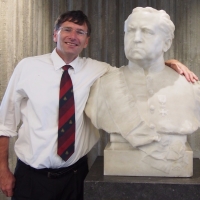If it adds anything to our studies, I will be happy to use the info.
Seems to be mostly about various Prologues and Prefaces, not the question of Jerome authorship of the Vulgate.
Maybe they will have interesting info on Jerome's Prologue to the Canonical Epistles.
May be. I guess you won't ever know unless someone tells you.
T HIS intricate volume, edited by Aline Canellis, professor of
Latin at the Universite ́ Jean Monnet, Saint- Etienne, brings to-
gether more than 20 short texts with which Jerome prefaced his
famous Bible translation, the Vulgate. They were transmitted to-
gether with the biblical texts throughout the Middle Ages and
were still included in the authoritative edition of the Vulgate pro-
mulgated by the Council of Trent in 1546. For more than ten
years, between 2007 and the publication of this volume in 2017,
they were the subject of intense study by a monthly seminar held
in Paris. The volume is in many respects a product of the work of
that seminar. In her foreword the editor dedicates the volume to
the founder and for many years convenor of the seminar, Yves-
Marie Duval, who sadly passed away in March 2007, and
acknowledges the contribution of the many colleagues who have
since participated, chiefly with work on the biblical prefaces, and
who are, as a consequence, contributors to the volume (that is to
the volume as a whole, not just to parts of it). Fifteen of them are
listed: Agnes Bastit, Carole Buchara, Re ́gis Courtray, Michel
Cozic, Beno^ıt Gain, Jean-Louis Gourdain, Pierre Jay, Beno^ıt
Jeanjean, Patrick Laurence, Laurence Mellerin, Marc Milhau,
Beno^ıt Mounier, Francesco Pieri, Clive Sweeting, and Delphine
Viellard. In addition, the foreword acknowledges the input of
Jacques Trublet, Pierre-Maurice Bogaert, Pierre Petitmengin,
and Gilles Dorival. The volume is divided between 300 pages of
introduction about about 220 pages of text and translation. Lists
of abbreviations and bibliographies of sources and secondary lit-
erature (pp. 15–50) are followed by chapters on the history of the
Bible (especially the Septuagint and Old Latin) before Jerome
(pp. 51–76), Jerome’s undertaking of learning the biblical lan-
guages and translating the Old Testament from the Hebrew
(pp. 77–156), Jerome’s method of translation (pp. 157–64), the
practice of writing prefaces and the possible intended readership
of those prefaces (pp. 165–201), the phenomenon of inauthentic
prefaces (pp. 201–11), the history of the Vulgate text from the
Carolingian era to the Council of Trent (pp. 212–25), the present
tradition (pp. 226–46), and bibliography relating to the edition
(pp. 247–300). The Latin text of the prefaces is taken from the
current Vulgate edition by Weber and others (Biblia sacra iuxta
vulgatam versionem, 5th edn. [Stuttgart, 2007]), and the modern
French translation is supplemented by copious notes and explana-
tions. Three texts which are not by Jerome but included in the
Stuttgart edition are printed in an appendix (pp. 484–511). These
are the prologue to Sirach (to which a Greek version is added),
the prologue to the Pauline Epistles, and Eusebius’s Letter to
Carpianus in both the original Greek and in Jerome’s Latin trans-
lation. This last text is also elucidated by a complementary note
and two coloured facsimile prints illustrating the Eusebian canon
tables as found in a medieval manuscript held in Lyon,
Bibliotheque municipale, MS 431 (9th c., after 835), fols. 7v
and 13r
.
The combination of a reliable critical text, excellent new trans-
lations, critical notes, and introduction with up-to-date bibliogra-
phies, many useful tables (e.g. pp. 97–8 on the chronology of the
prefaces, pp. 110–17 and 199–200 on the chronology of Jerome’s
translation efforts as reflected in his correspondence, or p. 179 on
excerpts of prefaces as cited in Contra Rufinum), and several
indexes and similar features makes this volume an excellent work-
ing tool for anyone who wants to study Jerome’s oeuvre more
generally or his endeavour to translate the Bible more specifically.
Students of patristic exegesis too will find it useful. It is thus not
only another volume in the priceless series Sources chre ́tiennes
but can also be seen and experienced as a valuable achievement in
Jerome scholarship in its own right.


